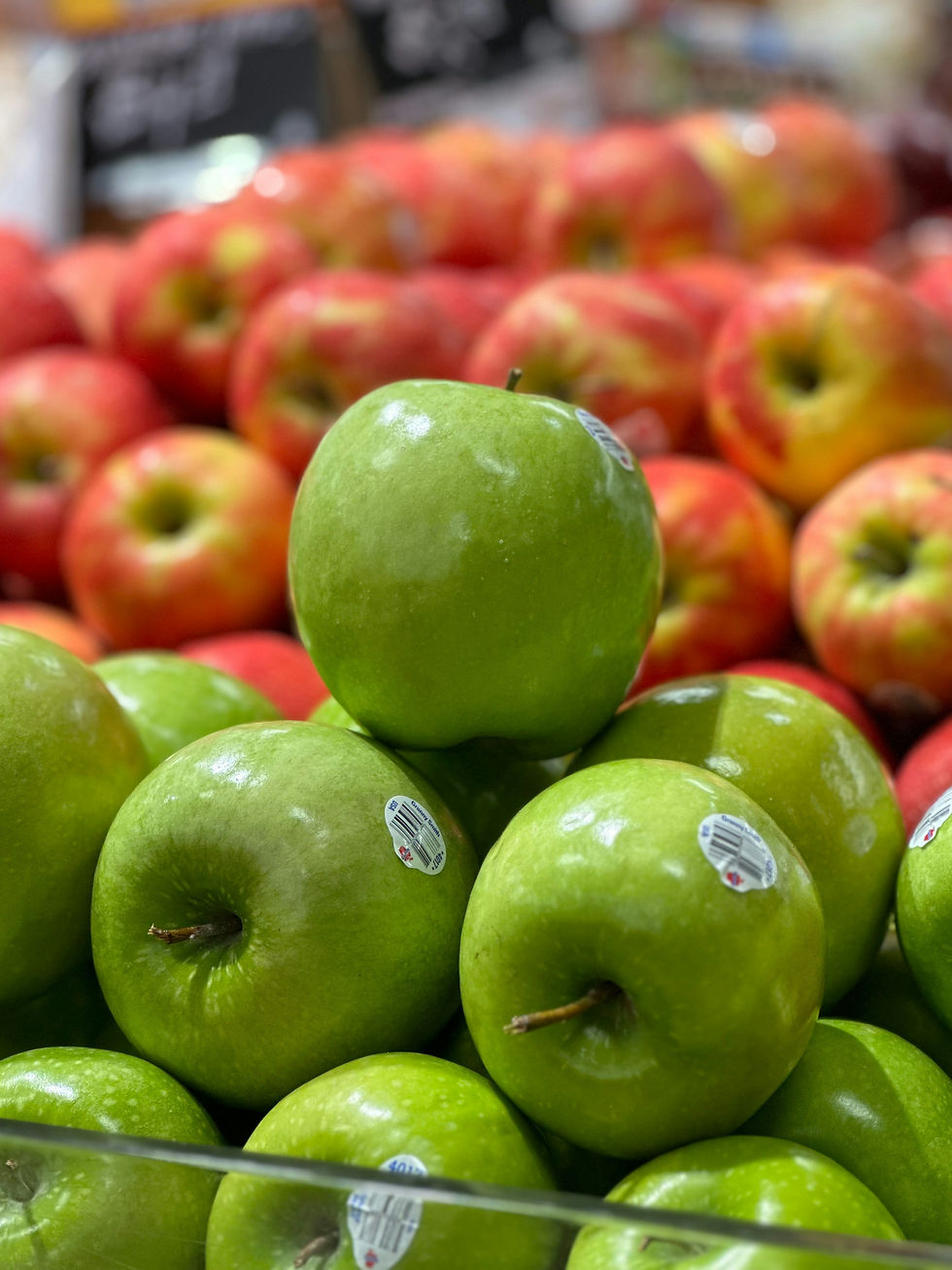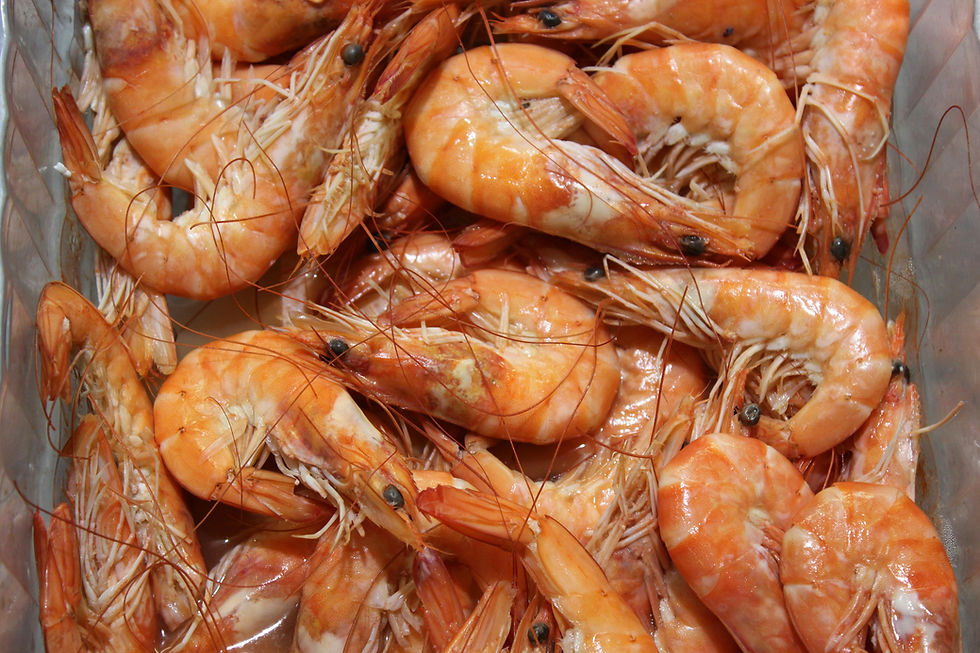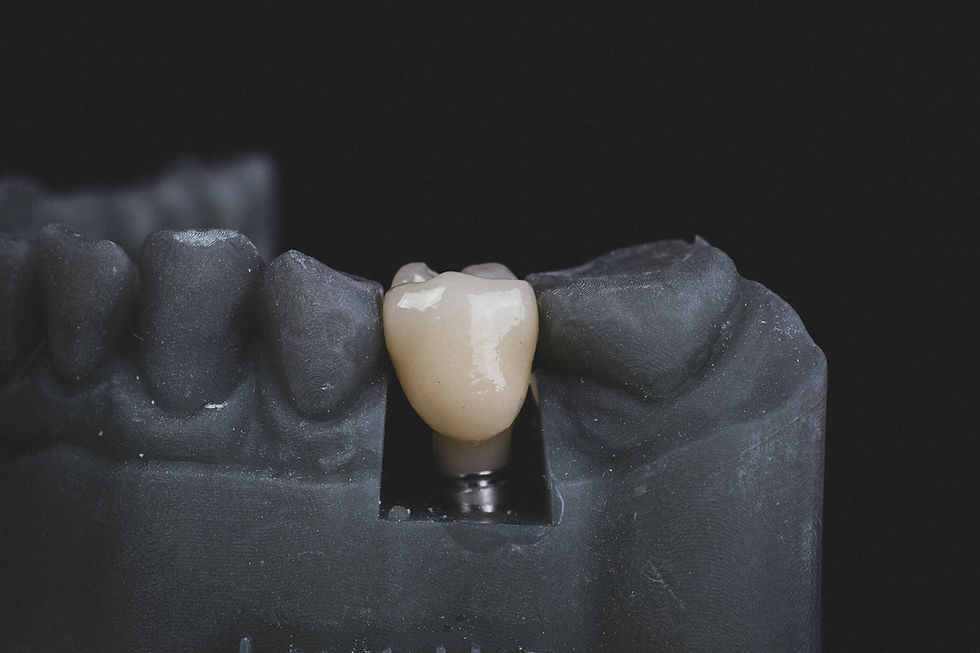Improving Food Preservation and Shelf Life with Chitosan Coatings
- Entoplast

- Jul 24
- 9 min read

Introduction
Food spoilage remains one of the most persistent challenges in the global supply chain, with traditional preservation methods often falling short of meeting modern demands for sustainability and consumer safety. While synthetic preservatives have long dominated the industry, growing concerns over chemical residues and environmental impact have sparked renewed interest in biologically derived alternatives. Among these emerging solutions, chitosan, has demonstrated exceptional promise as a multifunctional food coating. This biopolymer's inherent antimicrobial properties, combined with its ability to form protective barriers and scavenge free radicals, position it as a versatile tool in extending shelf life across diverse food categories. The convergence of consumer preference for natural ingredients, regulatory pressure for sustainable practices, and the urgent need to reduce food waste has created an ideal environment for chitosan's commercial adoption. This analysis examines the scientific foundation supporting chitosan's effectiveness in food preservation, evaluating its applications across fruits, vegetables, meat, and seafood, while considering the broader implications for sustainable food systems.
The Multifaceted Properties of Chitosan for Food Preservation
Chitosan's effectiveness as a food preservative stems from its unique physicochemical and biological properties. These attributes enable it to form protective coatings that actively combat the primary causes of food spoilage: microbial growth, oxidation, and moisture loss.
Antimicrobial Activity
One of the most significant advantages of chitosan as a food coating is its potent antimicrobial activity against a broad spectrum of bacteria, yeasts, and moulds, which are major culprits in food spoilage and foodborne illnesses. The mechanism of action is multifaceted but primarily involves the polycationic nature of chitosan. At acidic pH, the amino groups (–NH2) in chitosan become protonated (–NH3+), giving it a positive charge. This positive charge interacts electrostatically with the negatively charged components of microbial cell membranes, such as phospholipids and teichoic acids in Gram-positive bacteria, and lipopolysaccharides in Gram-negative bacteria (Rinaudo, 2006).
This interaction leads to several detrimental effects on microbial cells. Firstly, it disrupts the integrity of the cell membrane, increasing its permeability and leading to leakage of intracellular components like electrolytes, proteins, and nucleic acids (Liu et al., 2004). This leakage impairs vital cellular functions and ultimately leads to cell death. Secondly, chitosan can chelate essential metal ions, such as calcium and magnesium, which are crucial for microbial growth and enzyme activity (Kong et al., 2010). By binding these ions, chitosan deprives microorganisms of necessary cofactors, further inhibiting their proliferation. Thirdly, chitosan can penetrate the microbial cell and bind to DNA, inhibiting mRNA and protein synthesis, thereby disrupting cellular metabolism and replication (Raafat & Sahl, 2009).

Numerous studies have demonstrated chitosan's efficacy in inhibiting microbial growth on various food products. For instance, research by Devlieghere et al. (2004) showed that chitosan coatings significantly reduced the growth of Listeria monocytogenes and Pseudomonas fluorescens on fresh-cut vegetables. Similarly, chitosan films have been found to suppress the growth of Botrytis cinerea, a common mould causing decay in strawberries, thereby extending their shelf life (Romanazzi et al., 2007). The effectiveness of chitosan's antimicrobial properties can be influenced by factors such as its molecular weight, degree of deacetylation, concentration, and the pH of the food product (Hosseinnejad & Jafari, 2016).
Antioxidant Properties
Beyond its antimicrobial capabilities, chitosan also exhibits notable antioxidant properties, which are crucial for preventing oxidative spoilage in food products. Oxidation, particularly lipid oxidation, leads to undesirable changes in food, including rancidity, discolouration, and loss of nutritional value. Chitosan's antioxidant activity is attributed to its ability to scavenge free radicals, chelate metal ions that catalyse oxidation reactions, and reduce hydroperoxides (Kim & Rajapakse, 2005).
The hydroxyl and amino groups present in the chitosan structure are capable of donating hydrogen atoms to reactive free radicals, thereby stabilising them and preventing chain reactions that lead to oxidative damage. Furthermore, chitosan can effectively chelate transition metal ions like iron and copper, which act as pro-oxidants by catalysing the formation of free radicals. By binding these metal ions, chitosan prevents their participation in oxidation processes, thus preserving the quality of food products (Shahidi et al., 1999).
Studies have confirmed the antioxidant benefits of chitosan coatings. For example, chitosan coatings have been shown to reduce lipid oxidation in fish fillets, maintaining their freshness and sensory attributes for longer periods (Ojagh et al., 2010). In fruits, chitosan applications have been observed to preserve ascorbic acid content and reduce enzymatic browning, both indicators of oxidative stability (Wang et al., 2007). The incorporation of other natural antioxidants, such as essential oils or plant extracts, into chitosan coatings can further enhance their antioxidant capacity, creating synergistic effects for improved food preservation (Perdones et al., 2012).
Barrier Properties
Chitosan coatings also act as effective barriers against external factors that contribute to food spoilage, primarily moisture loss and gas exchange. Maintaining optimal moisture content is vital for preserving the texture, freshness, and overall quality of many food products, especially fruits and vegetables. Chitosan's film-forming ability allows it to create a semi-permeable barrier on the food surface, which reduces water vapour transmission from the product to the environment, thereby minimising weight loss and dehydration (El Ghaouth et al., 1991).
Moreover, chitosan films exhibit excellent barrier properties against gases, particularly oxygen. Oxygen is a key factor in many spoilage reactions, including lipid oxidation and enzymatic browning. By limiting oxygen permeability, chitosan coatings can significantly slow down these degradation processes, thereby extending the shelf life of oxygen-sensitive foods (Park & Zhao, 2004). The selective permeability of chitosan films can also regulate the internal atmosphere of coated produce, allowing for controlled respiration and delaying ripening in fruits and vegetables. This creates a modified atmosphere around the product, which is beneficial for maintaining freshness and delaying senescence (Vargas et al., 2006).

Research has highlighted the effectiveness of chitosan as a barrier. For instance, chitosan coatings have been shown to reduce weight loss and maintain firmness in various fruits, including tomatoes (Chien et al., 2007) and mangoes (Kittur et al., 2001). The ability of chitosan to form a coherent, uniform film that adheres well to food surfaces is critical for its barrier efficacy. The degree of deacetylation and molecular weight of chitosan, along with the method of application, can influence the strength and permeability of these protective barriers (Roller & Covill, 2000).
Applications of Chitosan Coatings in Food Preservation
The versatility of chitosan allows its application across a wide range of food products, each benefiting from its unique protective qualities. From fresh produce to meat and seafood, chitosan coatings offer tailored solutions to extend shelf life and maintain quality.
Fruits and Vegetables
Chitosan coatings have been extensively studied and successfully applied to various fruits and vegetables, significantly extending their post-harvest life. For instance, studies on strawberries, a highly perishable fruit, have shown that chitosan coatings can reduce decay, maintain firmness, and preserve sensory qualities by inhibiting fungal growth and reducing respiration rates (Han et al., 2004). Similarly, in tomatoes, chitosan treatment has been found to delay ripening, reduce weight loss, and maintain fruit quality during storage (Bautista-Baños et al., 2006).

The effectiveness of chitosan on fruits and vegetables is largely due to its ability to form a semi-permeable film that modifies the internal atmosphere, reducing oxygen availability and slowing down ethylene production, a key hormone in fruit ripening. This creates a micro-environment that delays senescence and preserves nutritional content. For example, chitosan coatings on apples have been shown to reduce enzymatic browning and maintain antioxidant activity (Du et al., 2009). The addition of other natural compounds, such as essential oils or plant extracts, can further enhance the efficacy of chitosan coatings for specific fruits and vegetables, providing additional antimicrobial or antioxidant benefits (Perdones et al., 2012).
Meat and Poultry
Spoilage in meat and poultry products is primarily driven by microbial growth and oxidative rancidity. Chitosan coatings offer a promising solution to combat these issues. Research has demonstrated that chitosan films can significantly reduce bacterial counts on fresh meat, including common spoilage bacteria like Pseudomonas and Enterobacteriaceae (Soultos et al., 2008). The antimicrobial action of chitosan directly inhibits the proliferation of these microorganisms on the meat surface, thereby extending its microbiological shelf life.
In addition to microbial control, chitosan coatings also help in preserving the colour and reducing lipid oxidation in meat products. For example, studies on chicken breasts coated with chitosan have shown a reduction in lipid oxidation and maintenance of desirable colour attributes during refrigerated storage (Georgantelis et al., 2007). This is particularly important for meat products, where colour stability is a key indicator of freshness for consumers. The application of chitosan can be in the form of dipping, spraying, or incorporating it into edible films that wrap the product, providing a continuous protective layer (Darmadji & Izumimoto, 1994).
Seafood
Seafood is highly susceptible to rapid spoilage due to its high water activity, neutral pH, and rich nutrient content, which favour microbial growth, as well as high levels of unsaturated fatty acids, making it prone to oxidation. Chitosan coatings have proven effective in extending the shelf life of various seafood products. For instance, chitosan-coated fish fillets have shown significant reductions in total viable counts of bacteria and delayed the formation of volatile basic nitrogen compounds, indicators of spoilage (Fan et al., 2009).

The barrier properties of chitosan are particularly beneficial for seafood, as they help to reduce moisture loss and prevent the absorption of off-odours from the environment. Furthermore, the antioxidant activity of chitosan plays a crucial role in preventing lipid oxidation in fatty fish, which can lead to rancidity and undesirable flavours. Studies on shrimp have demonstrated that chitosan coatings can maintain their quality by reducing melanosis (black spot formation) and inhibiting bacterial growth (No et al., 2007). The combination of chitosan with other natural preservatives, such as tea polyphenols or essential oils, has shown synergistic effects in further enhancing the preservation of seafood (Duan et al., 2010).
Benefits of Chitosan Coatings: A Sustainable Solution
The widespread adoption of chitosan coatings in the food industry offers a multitude of benefits that extend beyond mere preservation, contributing significantly to sustainability, food safety, and economic viability.
Enhanced Food Safety and Reduced Waste
By effectively inhibiting the growth of spoilage microorganisms and foodborne pathogens, chitosan coatings directly contribute to enhanced food safety. This reduction in microbial load minimises the risk of foodborne illnesses, providing safer products for consumers. Furthermore, by extending the shelf life of perishable foods, chitosan coatings play a crucial role in reducing food waste, a major global challenge with significant environmental and economic implications. Less spoilage means more food reaches consumers, reducing losses throughout the supply chain from farm to fork. This aligns perfectly with global efforts towards sustainable food systems and resource efficiency (Gustavsson et al., 2011).
Natural and Biodegradable Alternative
Unlike many synthetic preservatives and plastic packaging materials, chitosan is a natural biopolymer that is fully biodegradable and biocompatible. Its decomposition in the environment does not leave harmful residues, making it an environmentally responsible choice. This natural origin also appeals to consumers who are increasingly seeking 'clean label' products free from artificial additives. The shift towards natural preservation methods reduces the reliance on synthetic chemicals, lessening the environmental footprint of food production and processing (Arancibia & Lopez-Caballero, 2015).
Preservation of Nutritional and Sensory Quality
Chitosan coatings not only extend shelf life but also help to maintain the intrinsic nutritional value and sensory attributes of food products. By acting as a barrier against moisture loss and oxidation, chitosan preserves the texture, colour, flavour, and vitamin content of fruits, vegetables, meat, and seafood. This ensures that consumers receive products that are not only safe but also retain their desirable qualities, leading to greater consumer satisfaction and reduced rejection rates (Ribeiro et al., 2007). For example, the crispness of fresh produce and the vibrant colour of meat are better maintained, enhancing the overall appeal and marketability of the products.
Economic Advantages

For food producers and retailers, the extended shelf life afforded by chitosan coatings translates into significant economic advantages. Reduced spoilage means fewer product losses, lower waste disposal costs, and increased profitability. It also allows for longer transportation distances and broader market access, opening up new opportunities for trade and distribution. The ability to maintain product quality for longer periods can also command higher prices and build stronger brand reputation, ultimately benefiting the entire food supply chain (Han & Zhao, 2010).
Conclusion: Partner with Entoplast for a Sustainable Future in Food Preservation
The evidence overwhelmingly supports chitosan as a powerful, natural, and sustainable solution for improving food preservation and extending shelf life. Its multifaceted properties address the core challenges of food spoilage, offering a viable alternative to conventional methods. As the global demand for safe, high-quality, and sustainably produced food continues to rise, the role of innovative biopolymers like chitosan becomes increasingly critical.
At Entoplast, we are at the forefront of this revolution. As a leading UK-based manufacturer of premium chitin and chitosan, we are committed to providing the highest quality ingredients that empower industries to develop cutting-edge solutions. Our meticulously sourced and processed chitin and chitosan are designed to meet the stringent demands of food applications, ensuring purity, consistency, and efficacy. We understand the complexities of food preservation and are dedicated to supporting our partners in harnessing the full potential of this remarkable biopolymer.
We invite food manufacturers, researchers, and innovators to explore the transformative capabilities of chitosan. By partnering with Entoplast, you gain access to not only superior quality chitin and chitosan but also a wealth of expertise and a shared vision for a more sustainable food future. Whether you are looking to enhance product safety, reduce waste, extend market reach, or meet growing consumer demand for natural solutions, Entoplast is your trusted partner. Join us in shaping the future of food preservation. Contact us today to discuss how our chitin and chitosan can transform your product line and contribute to a healthier, more sustainable world.





Comments